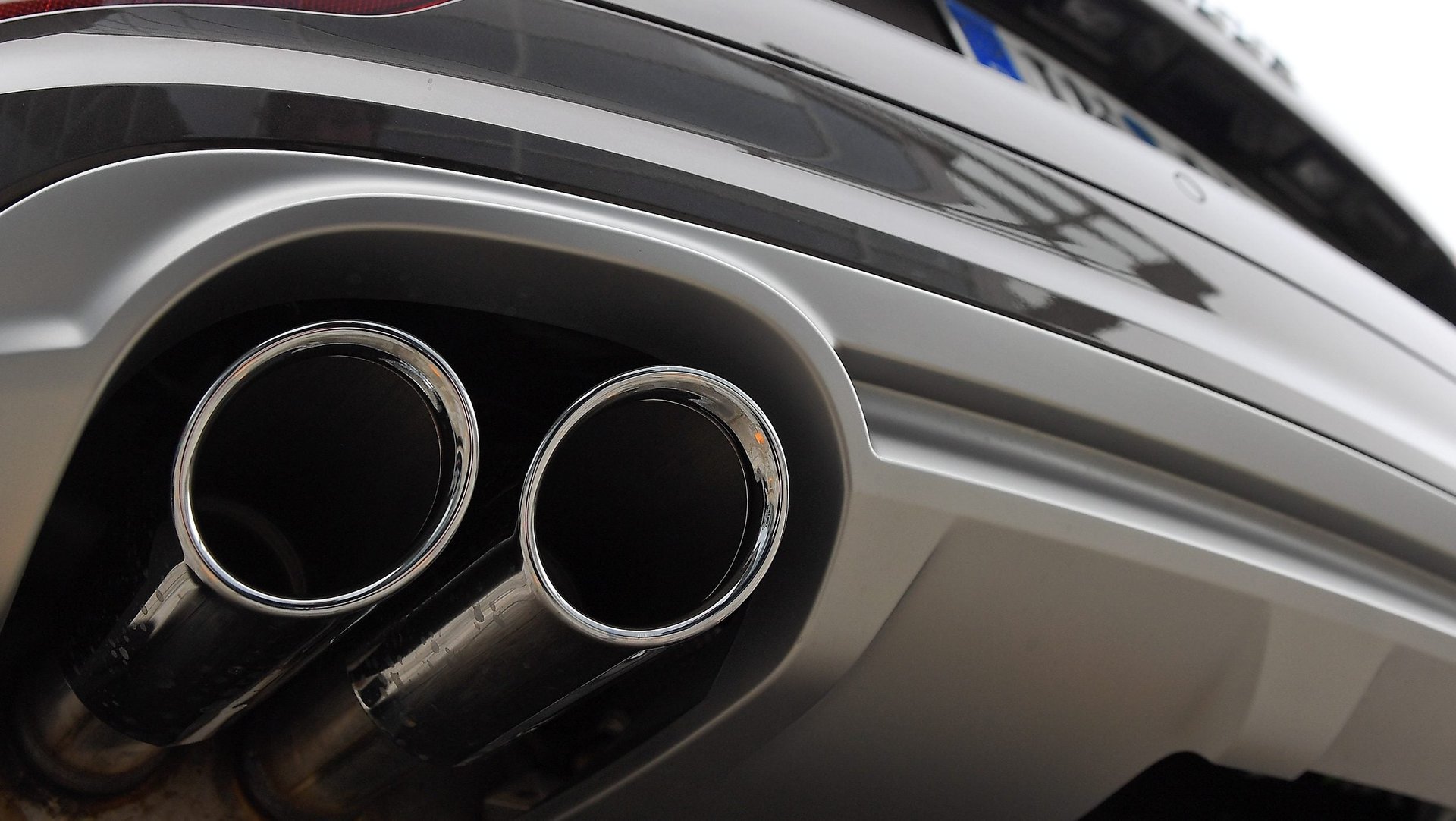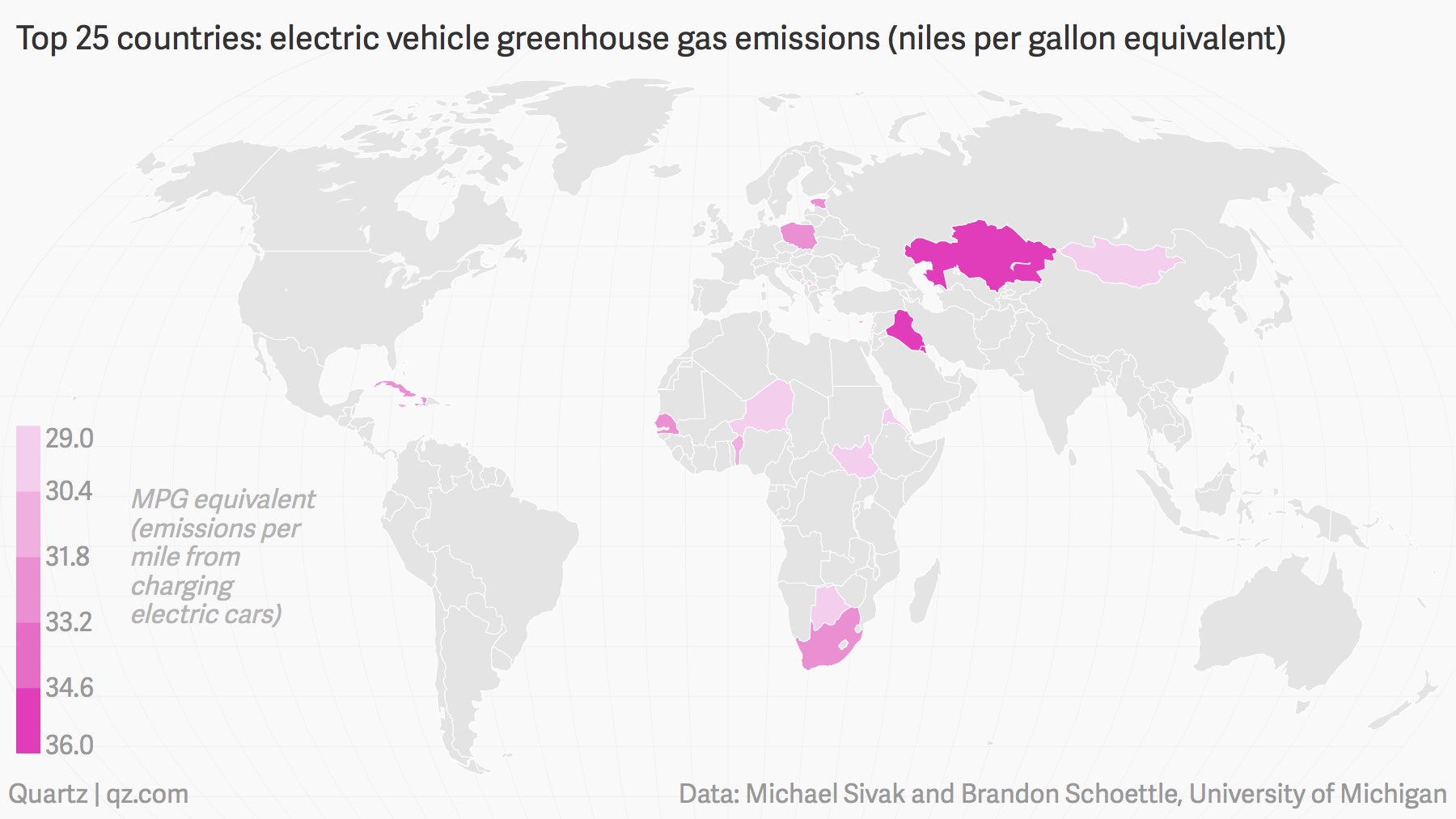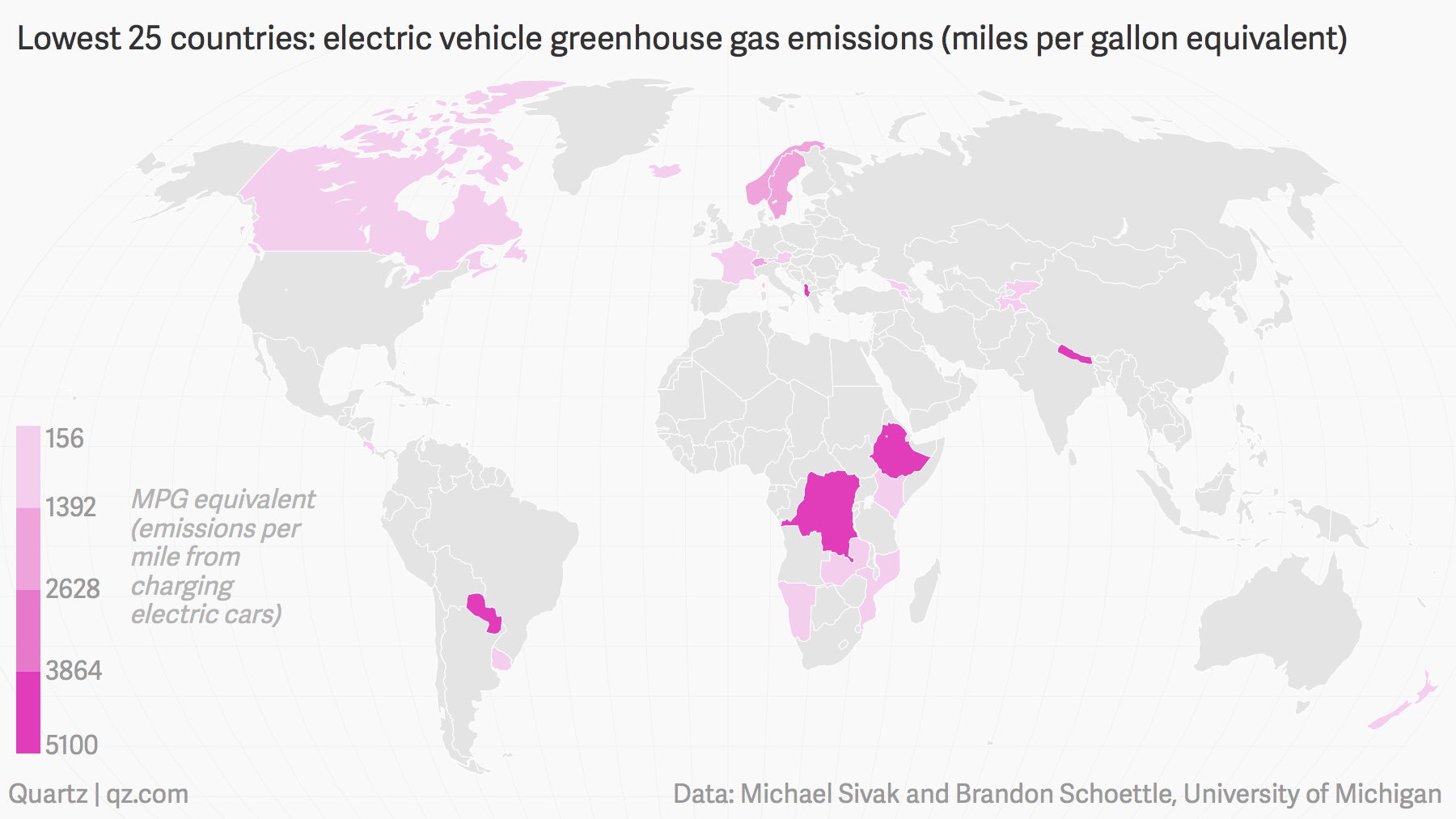The best and worst countries for emissions from electric cars
Not all electrons are created equal. Electric cars need electricity to recharge. Batteries can draw their charge from clean hydroelectric dams, wind turbines, and solar panels, as well as coal, oil, and gas power plants. As a result, the indirect emissions from electric vehicles (EV) vary wildly from country to country.


Not all electrons are created equal. Electric cars need electricity to recharge. Batteries can draw their charge from clean hydroelectric dams, wind turbines, and solar panels, as well as coal, oil, and gas power plants. As a result, the indirect emissions from electric vehicles (EV) vary wildly from country to country.
To rank nations, researchers at the University of Michigan calculated emissions from EVs by analyzing the power grids in 141 countries (pdf) with data from the Union of Concerned Scientists and the International Energy Agency. To do this, they estimated the equivalent greenhouse gasses EVs emit per mile based on their national power grid. The more fossil fuels on the grid, the higher the emissions (MPGghg).
It turns out, driving electric cars is almost always cleaner than their conventional counterparts. Only 19 countries, including Niger, South Sudan, Eritrea, Botswana, and Gibraltar (where power plants tend to rely on coal and oil) fall below 33 MPGghg (the average global fuel economy in non-OECD counties. It’s just 34 MPG in OECD countries; pdf).
In places where hydroelectric dams power most of the grid, such as Albania, Paraguay, Nepal, and Ethiopia, EV drivers can achieve more than 4,000 MPGghg. But most countries fall near the EV global median emissions of 58 MPGghg, just above the United States.
Geography matters. High emitting countries tend to cluster in poor or isolated areas of Asia and the Middle East, which have yet to transition off fossil fuels. Low emitters are split between African and South American countries with abundant hydroelectricity, and northern Europe, which have invested heavily in solar, wind, and other renewable sources. Canada has abundant hydro and other renewable energy sources.


How much does this all really matter? Michael Sivak, a researcher at the University of Michigan’s Transportation Research Institute responsible for the study, estimates that driving more fuel-efficient cars is among the largest sources of emission reductions for individuals. Among the five human sources of greenhouse gas emissions, only emissions from industry (29%) exceed the transport sector (27%). Sivak calculates raising the average fuel economy from today’s 25 mpg to 56 mpg would cut total U.S. emissions by 10%.
Update: A table with the full dataset was removed from a previous version of this post at the request of the study author, and the maps were updated.